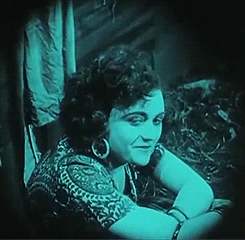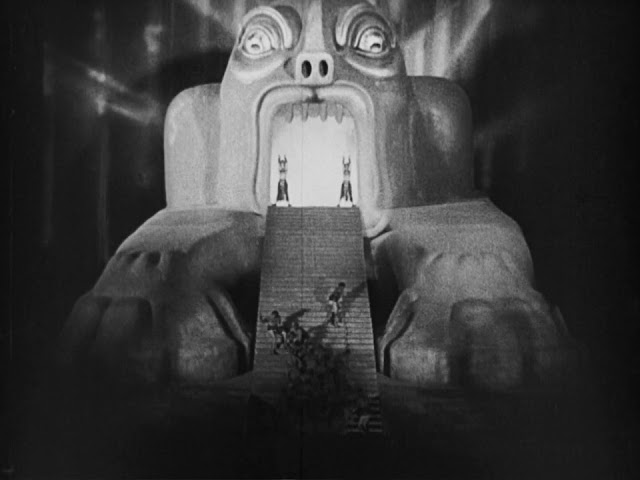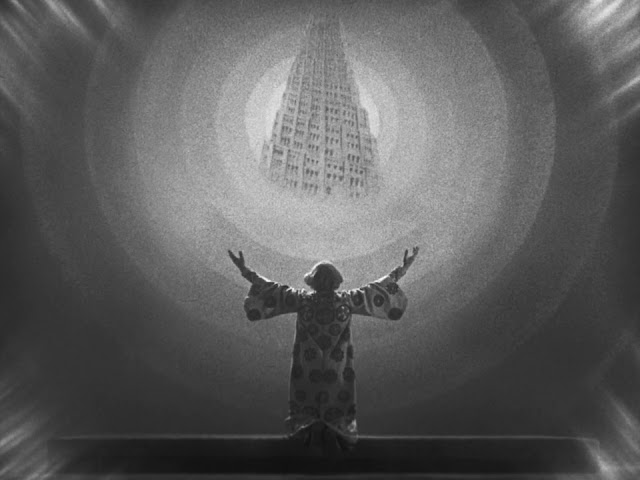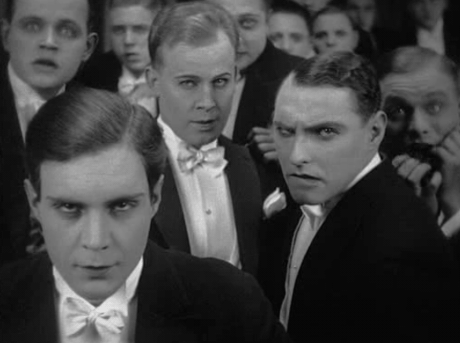This month, in addition to film review posts, we'll be focusing on a number of actresses who helped to define the idea of a femme fatale, a stock character of a seductive, mysterious, often exotic woman intent on bringing men to their downfalls that has been consistently employed by films over the past century and a half. Join us for the last installment of June's theme: Evil Women.
Pola Negri was considered by many to be the last vamp of the Silent Age of Hollywood. Unlike most other Hollywood vamps, Negri was actually foreign, lending authenticity to her brand of exotic, mysterious sex appeal. She was the first Hollywood star to be brought over from Europe in the years prior to the second World War, but certainly not the last; her success in America would inspire the rise of such major stars as Greta Garbo and Marlene Dietrich. During her 90-year lifespan, Negri was a ballerina, an immigrant, a recording artist, a screen actress, a vaudeville star, an author, the eleventh person to write her name in cement outside Grauman's Chinese Theatre in Hollywood, an the star of both American hit films and Nazi-sponsored films. Her legacy as an actress and, simply, as a celebrity, cannot be overlooked when discussing the origins of the Vamp. Pola Negri was Hollywood's first authentic vamp, and also its last.
Born Apolonia Chalupec on January 3rd, 1897 in Poland, then part of the Russian Empire, Pola Negri was the only surviving child of a mother descended from Polish nobility and a tinsmith father. Much of Negri's childhood was spent in dire poverty in Warsaw, following her father's arrest and exile to Siberia for handing out revolutionary leaflets. Luckily, Negri was able to escape her circumstance after being accepted into Warsaw's Imperial Ballet Academy as a child, where she began her rigorous dance training. She was on track to becoming a professional prima donna when she was struck with tuberculous, effectively ending her dance career and sending her to live in a sanitarium at the age of thirteen. Once released a year later, Negri managed to get accepted into the Imperial Academy of Dramatic Arts in place of her dance school, with the intentions of making the (less-strenuous) transition to acting.
By the time she was 17, Pola Negri was one of the most popular stage actresses in Poland. Her screen debut was in the 1914 film Slave to her Senses, followed up by several more films produced by the Warsaw Film Industry, many of which were later retitled and released in America. In 1917 Negri's popularity allowed her to move to Germany, where she began a successful partnership with the director Ernst Lubitsch. Together Negri and Lubitsch made many films, including the popular full-length features The Eyes of the Mummy Ma (1918) and Carmen (1918); however, it was the massive success of their 1919 collaboration Madame DuBarry that enabled a transition to the Hollywood film scene. Madame DuBarry was such a hit that it brought down the American embargo on German films and created a demand for German films that threatened Hollywood's power. Threatened by the success of their German rivals, Hollywood producers did the only thing they could do: They bought them out, and brought them over.
Ernst Lubitsch became the first German director brought to America for his services when silent film queen Mary Pickford demanded his participation in her 1923 film Rosita. Paramount Pictures offered Pola Negri a contract in 1922, and she was brought to America to make her debut and begin her transition into an American film star.
At the height of her fame, Pole Negri was one of the most financially successful and beloved actresses of her day. She was the richest woman in the film industry in the mid 1920s and flaunted her wealth by wearing luxurious clothes, dating some of the most popular actors of her generation, and living in a mansion in Hollywood modeled after the White House. She retained her sense of glamour her entire life, and is credited with popularizing several beauty and fashion staples, such as red nail polish, turbans, and fur boots. Even later in her life, during the filming of her last picture in 1964, Negri was spotted walking a cheetah around London. The woman didn't mess around when it came to sophistication.
She was romantically linked to many high-profile actors of her day, namely Charlie Chaplin and Rudolph Valentino. When Valentino unexpectedly died in 1926, Negri made such as fuss at his funeral, fainting several times and arranging the flowers on his casket to spell out her name, that the press believed her to be pulling a publicity stunt. Though she maintained that Valentino was her greatest love up until her death, she married the Georgian aristocrat Serge Mdivani less than nine months after his death. Negri desperately wanted children but miscarried several times.
As an actress, Negri often played exotic characters, vamps, and early femme fatales. Paramount wanted her as a counterpart to other vamps of the day and worked hard to keep her under their control, but Negri always knew what was best for herself. Early on in her American film career, she wrote to her agents who complained about her lack of public appearances, "We will get more publicity this way. I have already learned that the fewer appearances you make, the more they will talk about you. All you have to do is say you want to be alone- and the whole world thinks you are exotic and glamorous. It never occurs to them that you are simply tired." Throughout her career, Negri knew how to play the press like a fiddle, and always used it to her advantage.
For a brief period of time in the early 1930s, Negri went on a tour of Europe, during which time she made several films in Germany. Up until the outbreak of the second World War, Negri starred in many German films, one of which, 1935's Mazurka, was apparently one of Hitler's favorite films. At one point a French magazine accused Negri of having an affair with the infamous dictator, and Negri responded with a lawsuit, which she won. She made several films for the Joseph Goebbels-controlled UFA while living in France, and fled back to America following the German invasion of France.
Negri consistently worked in American films up until the 1950s, during which she announced that she would be retiring from acting. She made only one more screen appearance, in 1964, after which she fully retired from the screen and moved from Los Angeles to San Antonio, Texas, where she lived for years with her best friend, oil heiress Margaret West. She was approached by Billy Wilder in 1948 and asked to consider the role of Norma Desmond in his film Sunset Boulevard, but Negri politely declined. Still, it's easy to see how, along with the other starlets of the silent screen, Pola Negri inspired Wilder when writing the lead role.
Negri lived with West until her death in 1963, at which point she moved out of their shared home and into an apartment in San Antonio, where she lived until her own death in 1987, at the age of 90.
Pola Negri is the last silent film star we will be profiling for our EVIL WOMEN season. Initially we hoped to feature other actresses who took the vamp persona and shaped it into the femme fatale- due to time restraints, we will be featuring this as a separate season in the future. Join us next month for our new theme- The Silent Type.
Sources Used:
All photos sourced from Google Images and Pinterest




































































